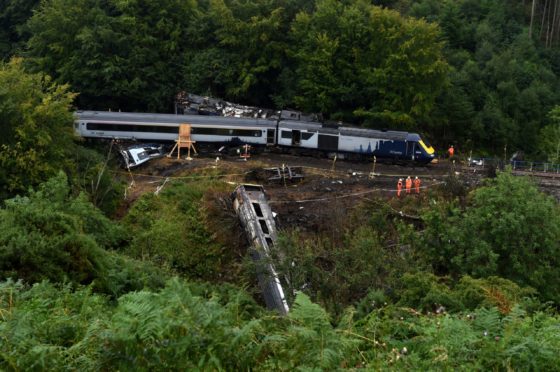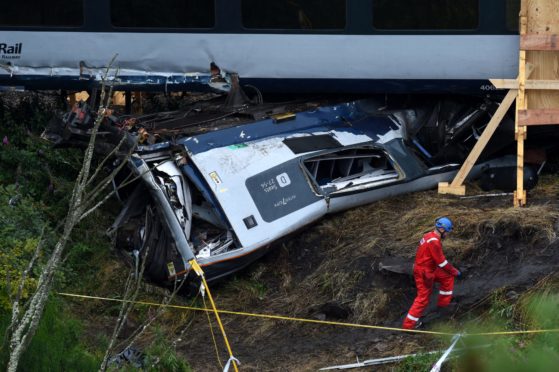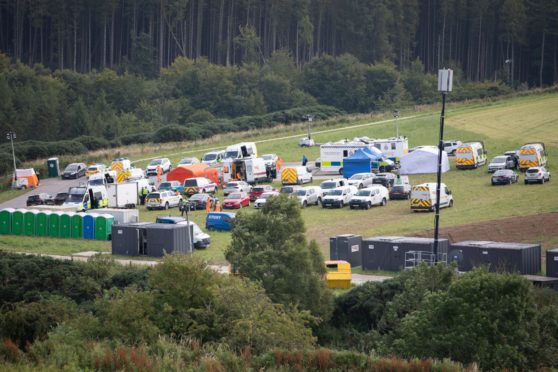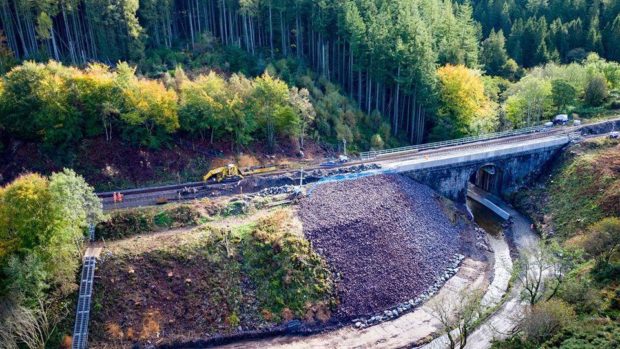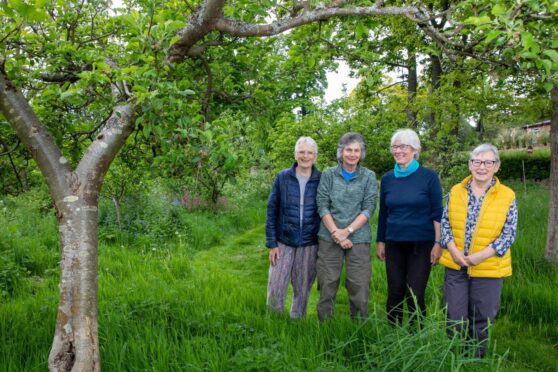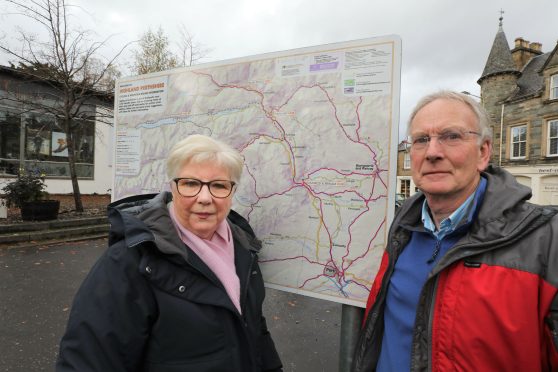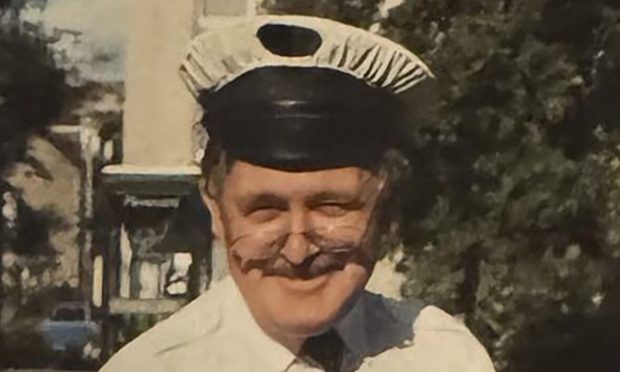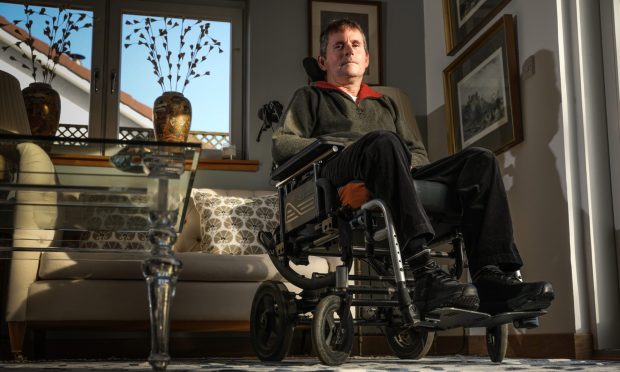Part of a key drainage system close to the scene of the Stonehaven railway crash was not inspected for eight years, a new report has revealed.
The UK Government’s Department for Transport (DfT) has today published its second interim report into the August 12 derailment, in which a ScotRail train crashed on a bridge.
The tragedy led to the deaths of the train’s driver, Brett McCullough, conductor Donald Dinnie and one of the passengers on board, Christopher Stuchbury.
The report, written by the Rail Accident Investigation Branch (RAIB), found that Network Rail had failed to mention part of the drainage points, known as Catchpit 18, on its inspection database.
It was also found that Network Rail had warned that the slope by the crash site had been assigned a “low to medium” likelihood of failure just two months earlier.
‘No evidence’ drain had been inspected since construction
According to the RAIB, no evidence was found of the “drain upslope of catchpit 18” being inspected between its construction in 2012 and the accident last year.
The report from the RAIB stated: “The crest drainage system was completed in 2012, but only the section closest to the track, from catchpit 18 to the outfall, was listed on Network Rail’s drain maintenance database at the time of the accident.
“RAIB has found no evidence that the drain upslope of catchpit 18 was inspected between its construction and the accident.”
It added: “On May 13 2020, two members of Network Rail staff based at Perth maintenance depot carried out a drainage inspection in the Carmont area using a hand-held computer loaded with information from the drain maintenance database, and
therefore not including the crest drain upslope of catchpit 18.
“They inspected the drain downslope of catchpit 18 and did not observe any faults.
“They did not climb further up the steep gorse-covered slope to seek additional catchpits.”
Further investigations needed to determine if drain design pushed debris onto line
While investigating the “cause of the washout” the RAIB determined “unusually heavy rain” washed stone from the gravel onto the track.
However, they added that further investigation was needed to determine whether the design of the drainage system “contributed to the displacement of material”.
It read: “The wash-out was caused by unusually heavy rain which washed stone from the gravel-filled crest drain near catchpit 18, and from surrounding ground, onto the adjacent track leaving the perforated drainage pipe exposed.
“Local ground topography directed large amounts of surface water onto the steeply
sloping drain in the area from which gravel was washed..
“Although surface water flow alone can dislodge gravel, and stones of other sizes, RAIB is continuing to investigate whether other factors, such as the drainage system’s
design or the quality of installation, contributed to the displacement of material.”
It continued: “The topography of the area around the washout, as recorded by an RAIB
aerial survey immediately after the accident, is shown in figure 8.
“Gravel was missing from the drain to a depth sufficient to expose the buried pipe partially or completely for a distance of about eight metres upslope of catchpit 18.
“Material was also missing for an additional six metres (19ft) around and downslope
of catchpit 18.
“Evidence of large surface water flows in this area was shown by detritus caught on a fence and by erosion of channels in the soil immediately upslope of the drain.”
Previous inspections showed area was at ‘low to medium’ risk of a landslip
The RAIB report also looked at “earthworks inspections” surrounding the track at Carmont.
It read: “Network Rail procedures require routine examinations of cuttings such as
that at Carmont, to identify their condition and to trigger appropriate remedial
action where needed.
“The section of cutting in the area of the washout was last examined on June 14 2020, and this inspection resulted in the slope being assigned a ‘low to medium’ likelihood of failure.
“It was assigned an earthworks hazard category of C on a scale from A (lowest risk) to E.”
However, it added: “The examiner found no serious issues, such as water flowing over the top of the cutting.
“A previous examination report, from January 2017, recorded ‘drain flowing
freely’, based on the examiner seeing water flowing from the outfall at track level.
“Earthworks examiners are not given any information on drainage arrangements
and are not expected to open catchpits. ”
The DfT published its first interim report within a month of the crash and a final report is to be published later this year.
Transport Secretary Grant Shapps said: “My thoughts remain with the families of Brett McCullough, Donald Dinnie and Christopher Stuchbury, who tragically lost their lives.
“This interim report highlights the extensive work that RAIB have been undertaking to understand the causes of this accident.
“I look forward to receiving the full findings in due course, to ensure lessons are learned from this tragedy.”
‘Robust’ response to the report
“Network Rail must learn from this incident and take the necessary steps to ensure that they are preventing incidents from happening.
“That means a robust and regular inspection, maintenance and improvement programme that means our railway infrastructure is fit for a future where extreme weather may become more regular and more challenging.
“We need a well-maintained railway that will need a hands-on approach to maintenance and improvements and not just leaving matters to predictions and forecasts.
“Rail resilience issues are a serious concern to RMT and we have tried to engage with Network Rail in Scotland in a proactive manner to ensure the safety of the travelling public and railway staff.”
